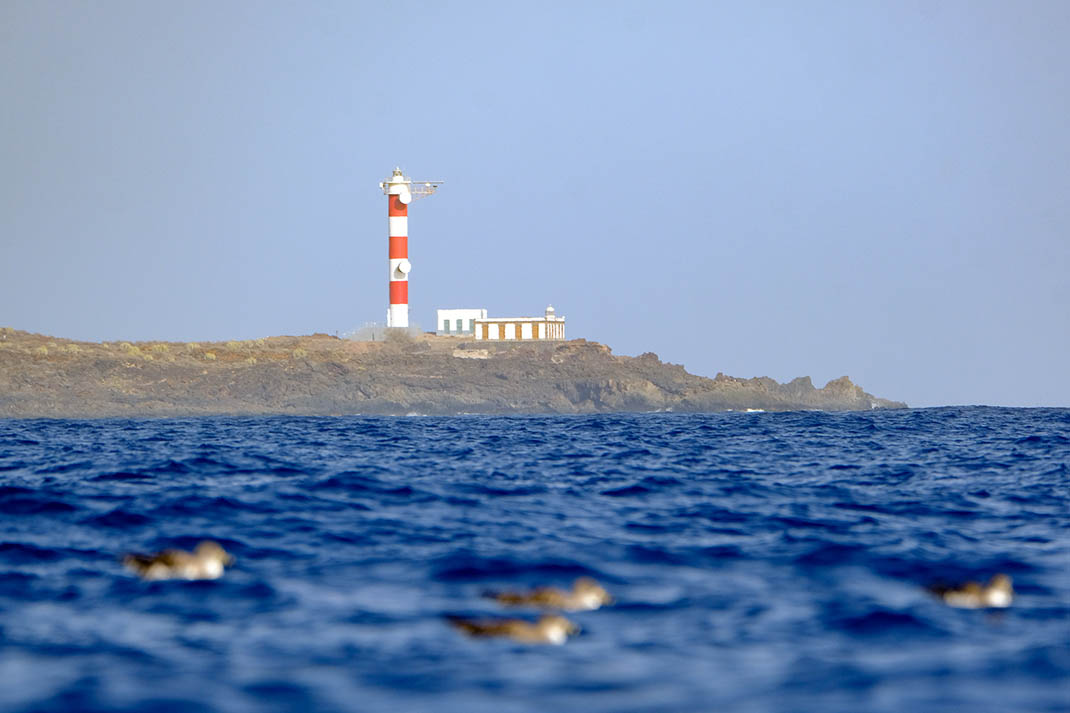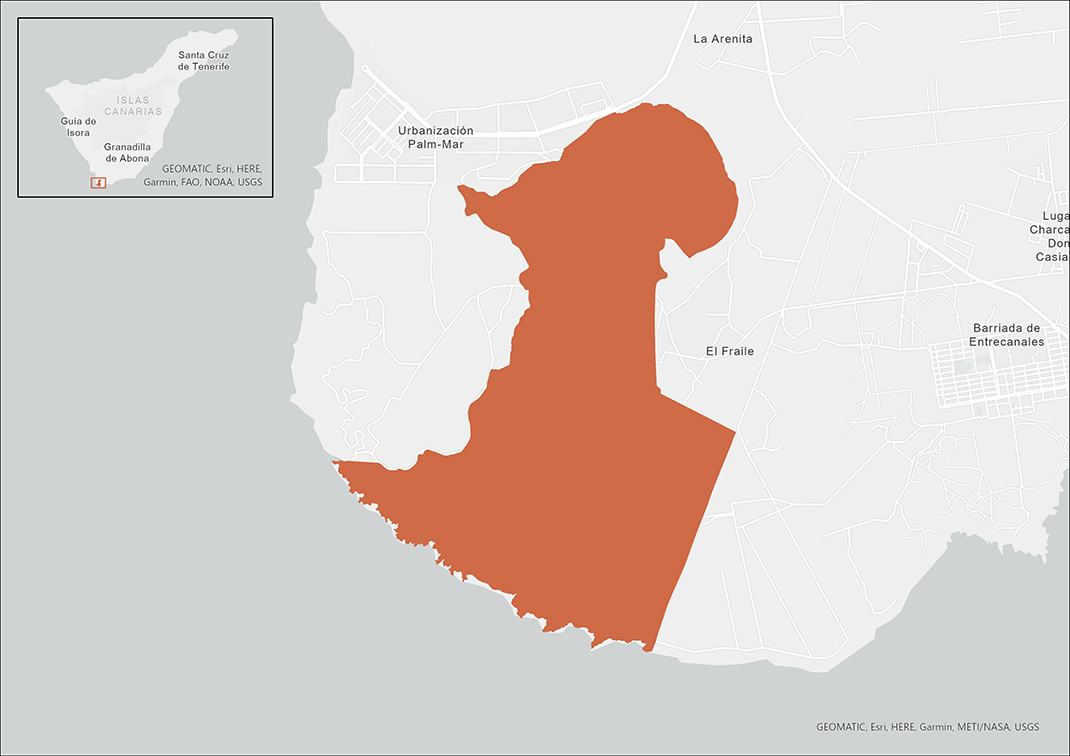Plan your next adventure
Tailor your own route along Tenerife’s trails quickly and easily..
Go to planner
The Malpaís de la Rasca Special Nature Reserve comprises three volcanic cones, the surrounding malpaís and a 3 km stretch of coastline.
This nature reserve is in a very good state of conservation and has high temperatures throughout the year, low rainfall and high sunshine.
Recommended time to visit: Any time of the year after the rains.
The landscape of today is the result of volcanic activity with several Strombolian eruptions that took place between 0.5 and 0.2 million years ago, giving rise to the malpaís that characterises the area.
The volcanic cones, between 100 and 150 m high, were formed by accumulations of lapilli, lava bombs and scoria around the crater.
In addition, in the reserve you can see a rare phenomenon: the coastal hydromagmatic edifice known as La Laguneta, in the shape of a ring with a low rim (around 50 m high) and a wide crater (1 km in diameter).

The plant life of the reserve is entirely lowland coastal vegetation. Its climate, with low rainfall and high temperatures, favours scrubland plants well adapted to arid conditions.
Some characteristic species of the Rasca coast are siempreviva de mar (Limonium pectinatum), uva de mar (Tetraenafontanesii) and tomillo de mar (Frankenia capitata). There are also some secondary species such as aulaga (Launaeaarborescens).
The rest of the plant life in the reserve consists of shrubs and bushes such as cardón or Canary Island spurge (Euphorbia canariensis), tabaiba (Euphorbia balsamifera, Euphorbia lamarckii), verode (Kleinianeriifolia), cardoncillo (Ceropegiadichotoma) and balo (Plocama pendula). The most striking of the annual plants are the ice plant (Mesembryanthemum crystallinum) and slenderleaficeplant (Mesembryanthemum nodiflorum). The rarest plants include incienso morisco (Artemisia ramosa); its largest population on Tenerife is to be found here.
In terms of fauna, the malpaís has extraordinary biodiversity, with a large number of invertebrates. Notable among them, due to their endemism and ecological role, are the species linked to cardón or Canary Island spurge (Euphorbia canariensis) and tabaiba (Euphorbia balsamifera, Euphorbia lamarckii), as well as those that live inside the volcanic cavities.
There are beetles that are dependent on these Euphorbia species, such as the longicornio del cardón (Lepromorisgibba), cucarro del cardón (Pelleascrotchi) and carnerito de la tabaiba (Deroplia albida).
The most numerous vertebrates are birds, both nesting and migratory. These are common species, but no less important for the ecosystem, such as kestrel, long-eared owl, Berthelot’s pipit, spectacled warbler, Canary Island chiffchaff, stone-curlew, and seabirds such as Bulwer’s petrel and Scopoli’s shearwater.
You will also be able to spot three native species found on the rest of the island in the reserve: Tenerife lizard, Tenerife skink and Tenerife gecko. However, the only native mammal to be found in Rasca is the European free-tailed bat.

315.6 ha (0.2% of the island).
Siempreviva de mar (Limonium pectinatum), uva de mar (Tetraenafontanesii), tomillo de mar (Frankenia capitata), cardón or Canary Island spurge (Euphorbia canariensis), tabaiba dulce (Euphorbia balsamifera), verode (Kleinianeriifolia), balo (Plocama pendula), ice plant (Mesembryanthemum crystallinum), slenderleaficeplant (Mesembryanthemum nodiflorum), incienso morisco (Artemisia ramosa), longicornio del cardón (Lepromorisgibba), cucarro del cardón (Pelleascrotchi), carnerito de la tabaiba (Deroplia albida), Berthelot’s pipit, Scopoli’s shearwater, Bulwer’s petrel, spectacled warbler, stone-curlew, Tenerife lizard, European free-tailed bat.
Volcanic cone, sandy plains, malpaís, cardonal-tabaibal (Euphorbia), coastal strip.
Montaña Grande, Montaña Aguzada, Montaña de La Caraba and Montaña Pardela, La Laguneta, malpaís, coastal strip.
To consult permits for use and updated regulations for this Protected Natural Area, visit the official website of the Government of the Canary Islands.

Tailor your own route along Tenerife’s trails quickly and easily..
Go to planner